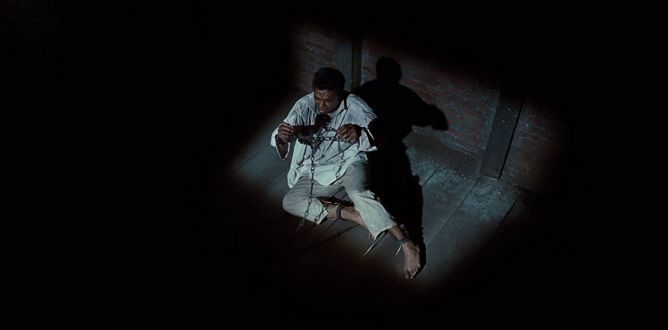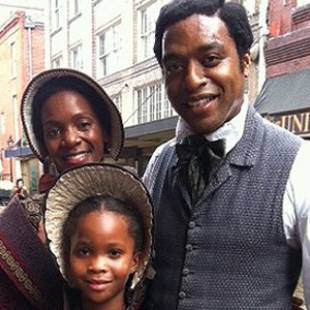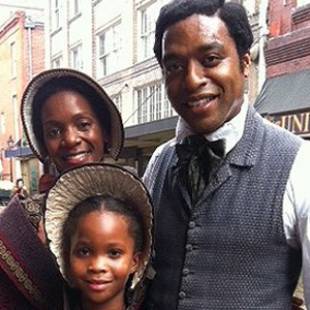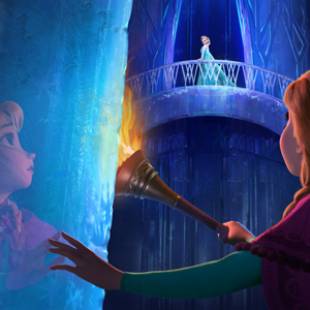12 Years a Slave Parent Guide
Parents and teachers evaluating " 12 Years a Slave" as a learning opportunity should carefully assess the disturbing content within - harrowing images might override messages.
Parent Movie Review
Release Date: 18 October 2013 (Limited)
African-American director Steve McQueen had a difficult task in making 12 Years A Slave. Somehow he needed to create a film that accurately told the story of Solomon Northup but still had people sitting in their seats when the credits rolled. The fact that so many people have persevered through this painful biography of the dozen years during which Solomon was abducted into slavery speaks volumes about the artfully crafted and exceptionally enlightened execution of the film. But don’t think for a moment this is a movie you will watch and soon forget.
Solomon Northup (Chiwetel Ejiofor) was a free black man born in the state of New York. He compiled his experiences in a book that was published in 1853—a best seller in its day. Based on that account, this adaptation opens with Solomon living the life of an educated gentleman, playing his violin at high-brow events, and enjoying being a husband and father. When a friend introduces him to a couple of entertainers seeking a musician for their travelling circus, Solomon sees the well-paying, temporary job as an opportunity for adventure and additional income. All seems well until the trusting man wakes up in chains. Next he is thrown into the infamous Williams Slave Pen in Washington DC, with a view of the Capitol Building from his tiny subterranean window.
Needless to say the kidnapped man’s misery has only begun, as he is sold and transferred as property from one Southern white landowner to the next. He soon learns that no matter how obedient he is to his “master,” he will ultimately feel the slash of the whip on his back multiple times. But even the bitterness of having to accept this unjustified punishment pales compared to moments when he is ordered to render the same abuse on another slave. One scene (for me one of the most unsettling) is the beating of a young slave woman named Patsey (Lupita Nyong’o). Tied naked to a tree, Northup is commanded to whip her after she returns from borrowing a bar of soap from a neighbor. After a couple of dozen reluctant lashes Master Epps (Michael Fassbender) takes over and strikes the woman nearly to death.
This tirade, and other violent scenes like it, shows blood, ripped flesh and explicit injuries. Many other sequences depict slaves being killed (one is stabbed, others are hung and treated inhumanly). A rape and another moment of sexuality (no nudity is shown) are present, along with portrayals of slaves forced to strip naked for inspection (full male and female nudity is seen). As well, the script includes a selection of moderate and mild curses, and many uses of a derogatory racial term.
Parents and teachers evaluating 12 Years A Slave as a possible learning opportunity for young audiences should carefully assess the disturbing content within—otherwise the harrowing images may override the important messages they hope the viewers might gain.
Directed by Steve McQueen. Starring Brad Pitt, Michael Fassbender, Michael Kenneth Williams. Running time: 134 minutes. Theatrical release December 13, 2013. Updated May 23, 2020
12 Years a Slave
Rating & Content Info
Why is 12 Years a Slave rated R? 12 Years a Slave is rated R by the MPAA for violence/cruelty, some nudity and brief sexuality.
Enduring physical and psychological torture, it is only Solomon Northup’s determination and undiminished hope of a better life that allows him to survive. With the vast majority of the dialogue coming directly from the book upon which it’s based, this film may be the most unflinching portrayal of slavery yet. Aside from understanding this dark period of American history, Northup’s story also illustrates this man’s ability to still love and care for others while living in the most oppressive of conditions.
Violence: This film portrays slavery and the brutal methods used to abduct people and maintain control over them. Violence, both physical and verbal, is depicted throughout and includes scenes of torture, stabbing, hanging, choking fighting and whipping. A female slave is forced to remove her clothing after which she is tied to a tree and brutally beaten, first by a male slave (who is ordered to beat her) and then, with even more brutality, by her “master.” (We see her from the front with blood splattering from her back when the whip meets her flesh). This, and others lashing, show the victim’s wounds afterward—deep cuts and gashes in their backs. A male slave about to be hung is left hanging from a tree during an entire hot day with his toes barely touching the ground (we hear him gasping for air). A character is stabbed. A woman who has been beaten, raped and abused by a man (her “master”) begs another male slave to kill her. A man (a master) has sex with a female slave (essentially raping her) and slaps her when she appears to pass out during the act (we see their heads and torsos but no nudity). Another scene implies a woman is raped.
Sexual Content: (Some content duplicates what is noted in Violence above.) A man forcibly has intercourse with a female slave (essentially raping her), during which he slaps her when she appears to become unconscious—no nudity is seen during the act. Slaves, male and female, are forced to remove their clothing so they may be inspective by prospective buyers. Another scene shows a group of slaves—men and women—crowed around a washbasin. (In the movie there are four instances of non-sexual nudity depicting breasts, buttocks and genitalia.) A dark scene between an enslaved man and woman shows the woman taking the man’s hand and using it to stimulate herself. Throughout the movie there are moments where it is implied that men have sexual relations with enslaved women.
Language: Frequent racial slurs for African-Americans are used. A sexual reference is heard along with over a dozen other mild obscenities and a variety of derogatory phrases and terms.
Alcohol / Drug Use: Drinking is depicted throughout this movie, typically consumed by white men leading them to further violence. One male character is nearly always intoxicated. A character purchases tobacco.
© 2013 One Voice Communications Ltd. All rights reserved.
Page last updated May 23, 2020
12 Years a Slave Parents' Guide
Aside from obvious discussions on the history of slavery in America, parents will also want to be prepared to discuss the use of violence and torture as a way to make people do things against their will. Caregivers should be particularly sensitive to young people who may live in situations where this type of behavior is occurring.
This movie is based on the autobiography Twelve Years a Slave, written by Solomon Northup in 1853.
Home Video
The most recent home video release of 12 Years a Slave movie is March 4, 2014. Here are some details…
Home Video Notes: 12 Years a Slave
Release Date: 4 March 2014
12 Years a Slave release to home video (Blu-ray/Ultraviolet) with the following extras:
- A Historical Portrait
- The Team
- The Score







